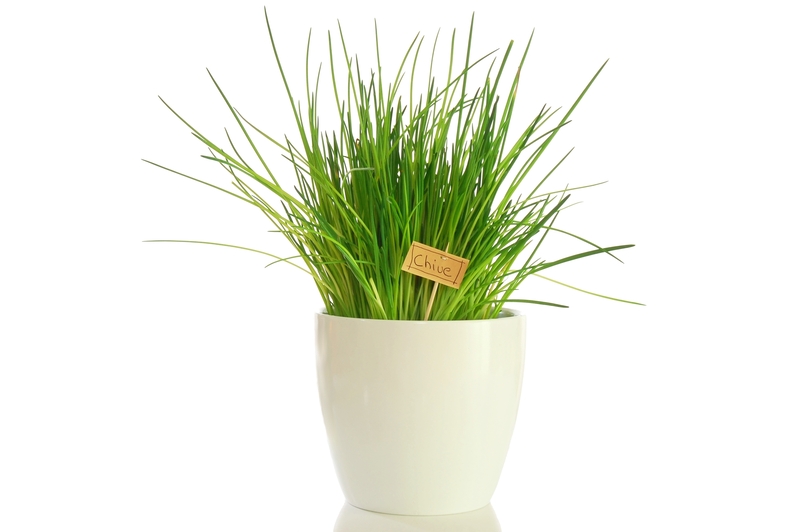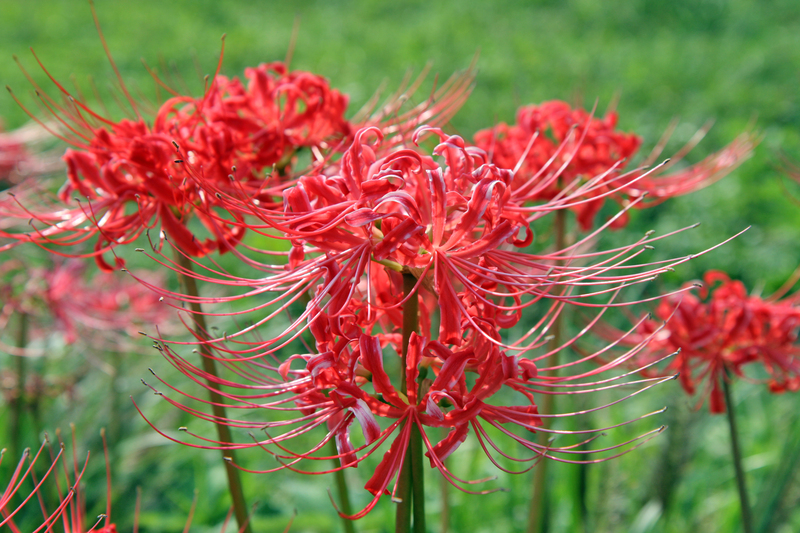Celebrate homegrown flavors with your own herb garden
Posted on 28/05/2025
Celebrate Homegrown Flavors with Your Own Herb Garden
Imagine plucking a sprig of basil or a handful of crisp mint leaves from your backyard or kitchen windowsill, instantly transforming everyday meals into aromatic, flavor-packed experiences. Cultivating your own herb garden isn't just a rewarding and enjoyable hobby--it's a gateway to fresh, homegrown flavors and an essential step towards sustainable, healthy home cooking.
Why Start a Home Herb Garden?
Growing your own herbs brings an abundance of benefits that touch every aspect of your culinary, health, and lifestyle goals. When you celebrate homegrown flavors with your own herb garden, you're making an investment not just in your meals but in your well-being and the environment. Here are just a few compelling reasons to get started:
- Superior fresh flavors: Homegrown herbs pack a more intense, vibrant taste than store-bought varieties.
- Cost-effective: Save money by harvesting only what you need from your own herb garden, rather than purchasing entire bunches that may go to waste.
- Reduced food miles: Growing herbs at home eliminates the need for transport, packaging, and excessive refrigeration.
- Easy and accessible: Whether you have a sprawling garden or a sunny windowsill, there's room to nurture herbs anywhere.
- Therapeutic benefits: Gardening is known to boost mood, relieve stress, and contribute to a sense of accomplishment.
- Eco-friendly: Home gardens encourage biodiversity and lessen reliance on commercial herb cultivation, which may use pesticides and excess water.

Choosing the Right Herbs for Your Home Garden
Not all herbs are created equal for home growing, and the best ones for flavor-packed homegrown herb gardens are those you'll use most in your kitchen. Consider your favorite recipes and cuisines to guide your selections. Here's a list of popular culinary herbs ideal for beginners and seasoned gardeners alike:
Best Easy-to-Grow Herbs
- Basil: Essential for Italian dishes, salads, and pesto. Thrives in warm, sunny locations.
- Parsley: Versatile and mild, great for garnishing and adding freshness to countless recipes.
- Mint: Exceptionally easy to grow--perfect for teas, desserts, and cocktails. (Tip: Plant in pots to control spreading!)
- Rosemary: Robust flavor, ideal for roasts, grilled meats, and potatoes.
- Thyme: Earthy and aromatic, wonderful in soups, stews, and Mediterranean cuisine.
- Chives: Their mild onion flavor complements eggs, dips, and salads.
- Cilantro (Coriander): Essential for salsas, curries, and Mexican dishes.
- Dill: Fresh addition to pickles, seafood, and potato salads.
- Oregano: A cornerstone of pizza, pasta sauces, and grilled vegetables.
You can tailor your home herb garden to suit your family's tastes or to experiment with new, exotic flavors. Many home gardeners find joy in expanding their palettes with herbs like tarragon, sage, or even lemon balm.
Starting Your Herb Garden: Step-by-Step Guide
1. Decide on Indoor vs Outdoor Herb Gardening
Celebrating homegrown flavors with your own herb garden starts with choosing the right setting. Consider these factors:
- Space: Outdoor gardens allow for larger plots, while indoor container gardens are perfect for apartments or limited yards.
- Sunlight: Herbs generally require at least 4-6 hours of direct sunlight daily. South-facing windows are ideal for indoor setups.
- Climate: Some herbs are frost-tender (basil, cilantro), while others (thyme, oregano, chives) can handle cooler conditions.
2. Pick Your Containers or Garden Plot
Containers offer flexibility, allowing you to move your herbs indoors during cold snaps or out to the patio in summer. Choose pots with good drainage holes and high-quality potting soil. For outdoor gardens, select a plot with rich, well-draining soil.
3. Planting Your Herbs: Seeds or Starts?
- Seeds: Budget-friendly and satisfying but require patience and proper care. Plant according to packet instructions.
- Transplants (starts): Faster results; buy young herbs from a nursery to get an instant homegrown herb garden.
Tip: Some herbs (basil, cilantro, dill) grow quickly from seed, while others (rosemary, thyme) are usually best purchased as starts.
4. Care and Maintenance
- Watering: Most herbs prefer evenly moist but not soggy soil. Overwatering is a common mistake; make sure pots drain well.
- Feeding: Fertilize lightly every few weeks with an all-purpose organic fertilizer.
- Pruning: Pinch back leafy tips regularly to encourage bushy growth and prevent bolting (flowering).
- Pest control: Herbs are generally pest-resistant, but watch for aphids or mildew. Use natural remedies if needed.
5. Harvesting for Peak Flavor
For the most intense homegrown herb flavors, harvest herbs in the morning, just after the dew dries but before the sun is strong. Cut stems with sharp scissors just above a leaf node to promote further growth. Never remove more than a third of the plant at once to keep it healthy!
Creative Ways to Use Your Homegrown Herbs
Once you've successfully celebrated homegrown flavors with your own herb garden, it's time to explore the endless culinary, medicinal, and decorative uses of your bounty.
Culinary Adventures with Homegrown Herbs
- Fresh pesto, chimichurri, and salsas: The vibrant taste of just-picked basil, parsley, or cilantro is unbeatable.
- Herb butters and oils: Combine chopped herbs with butter or olive oil for instant flavor hosts to top bread, grilled meats, or vegetables.
- Flavor-infused drinks: Add mint, lemon balm, or rosemary sprigs to cocktails, teas, lemonade, or even water for refreshing aromas.
- Homemade dressings and dips: Whisk up ranch, tzatziki, or vinaigrettes with your own dill, chives, or oregano.
- Dry or freeze extras: Preserve surplus by air-drying, making herb salts, or freezing in ice cube trays for year-round use.
Herbs Beyond Cooking
- Aromatic decor: Bundle herbs like lavender and rosemary as fragrant bouquets or wreaths to freshen your home.
- Natural remedies: Use fresh oregano as an antimicrobial tea or rosemary in relaxing bath soaks.
- Pest deterrents: Lemongrass, mint, or basil help repel insects when planted near doors or patios.
- Homemade gifts: Craft dried herb sachets or culinary blends to share your harvest with friends and family.
Sustainable Living and Environmental Benefits
Building a home herb garden reinforces eco-friendly living in several key ways:
- Reduces packaging waste: No more plastic bags or clamshells from the supermarket.
- Minimizes food waste: Harvest only what you need, when you need it, keeping herbs fresher for longer.
- Supports pollinators: Many flowering herbs, such as basil and thyme, attract bees and beneficial insects.
- Contributes to local biodiversity: Home gardens provide crucial habitat for birds and helpful bugs.
Teaching the Next Generation
Including children in the process of cultivating and using homegrown herb garden flavors helps foster a lifelong appreciation for healthy eating and environmental mindfulness. Involve them in:
- Sowing seeds and watering: Simple tasks teach responsibility and patience.
- Cooking together: Add freshly picked herbs to homemade pizzas or pastas for interactive family meals.
- Gardening science: Track plant growth, learn about pollination, and understand the life cycle of plants.
Troubleshooting Common Herb Growing Challenges
Even experienced gardeners face obstacles. Here's how to overcome a few frequent issues and keep your homegrown herb flavors thriving all season long:
- Yellowing leaves: Usually caused by overwatering or insufficient light. Reduce water and reposition near a window or outdoors.
- Leggy plants: Not enough light is the culprit. Move plants to a sunnier location and pinch back stems to encourage bushiness.
- Pest infestations: Remove affected leaves, rinse with water, and use insecticidal soap if necessary. Companion planting (like basil near tomatoes) can naturally deter pests.
- Bolting (flowering too soon): Prevent by harvesting often and keeping soil evenly moist. Some herbs, such as cilantro, naturally bolt in hot weather. Succession planting can help maintain a steady supply.

Frequently Asked Questions About Home Herb Gardens
What are the easiest herbs to grow at home?
Basil, mint, chives, and parsley are some of the simplest herbs for beginners. These adaptable, fast-growing plants thrive in most home environments with a bit of sunlight and regular watering.
How much sunlight do herbs need?
Most culinary herbs prefer at least 4 to 6 hours of sunlight per day. South or west-facing windows are perfect indoors, while outdoor plots should be free from significant shade.
Can I grow herbs indoors year-round?
Absolutely! With adequate sunlight or a simple LED grow light, you can nurture aromatic homegrown herbs on a windowsill or countertop all year.
Should I fertilize my homegrown herbs?
Herbs don't require heavy feeding. Use a diluted organic liquid fertilizer once a month for optimal growth, especially in containers.
How do I preserve extra herbs from my garden?
Air-drying, freezing in oil or water in ice cube trays, and making herb-infused butters or vinegars are all popular preservation methods to enjoy homegrown flavors even in winter.
Conclusion: Savoring the Rewards of Your Home Herb Garden
Growing your own herb garden is an act of celebration--of local flavors, vibrant health, creativity in the kitchen, and a connection with nature. Whether you're snipping basil for a caprese salad, muddling fresh mint into a summer drink, or thickening a stew with fragrant thyme, each leaf you pluck adds a dash of personal satisfaction.
Start small--a single pot of basil or chives on your windowsill is enough to begin enjoying homegrown taste. With a bit of attention, you'll soon be harvesting ebullient flavors, cutting your grocery bills, and boosting your meals with organic, pesticide-free greens.
So why not celebrate homegrown flavors with your own herb garden? Make your meals come alive, embrace a greener way of living, and cultivate wellness right at your doorstep.

